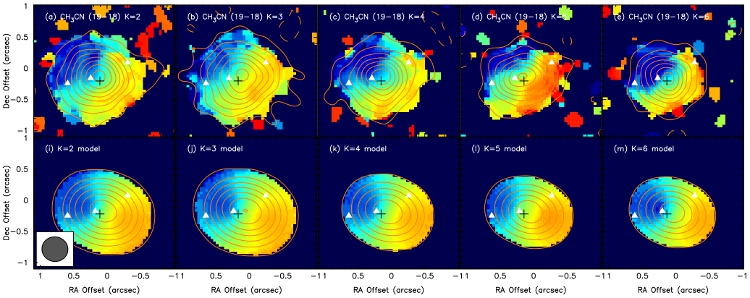| EPoS Contribution |
|
Disk Accretion around the Massive Protostar IRAS 20126+4104
Vivien Chen NTHU, Hsinchu, TW | |
| Whether accretion disks play an important role in the formation process of massive stars remains a controversial issue. Although Keplerian disks have been observed around low-mass protostars, such structures are difficult to resolve around massive protostars due to their large distances. The lack of strong observational evince casts some doubts on disk accretion scenario for high-mass star formation. Using the SMA, we have resolved the accretion disk around the nearby (1.64 kpc) luminous (104 Lsun) massive (~12 Msun) protostar, IRAS 20126+4104, with a resolution of 650 AU. Comparing multiple lines of CH3CN and CH3OH emissions, the disk clearly shows a spin-up kinematics resembling the Keplerian motions. The observed data cubes are compared with synthetic image cubes generated from radiative transfer models that include a collapsing rotating envelope around a flared Keplerian disk. Instability of this disk will be discussed in details. | |
 | |
| Caption: (Upper) IRAS 20126+4104 intensity-weighted velocity maps (colors) overload on the integrated-intensity maps of the K=2,3,4,5,6 components of the CH3CN (19-18) transitions with an angular resolution of 0.4" (650 AU). Triangles are positions of H2O masers (Tofani et al. 1995) and the cross marks the peak position of the 345 GHz continuum. (Lower) Similar to the upper row but for the synthetic image cube generated from the optimized LTE radiative transfer model. | |
| Collaborators: Q. Zhang, CfA, USA E. Keto, CfA, USA S.-Y. Liu, ASIAA, Taiwan Y.-N. Su, ASIAA, Taiwan |
Suggested Session:
Cores to Disks |

